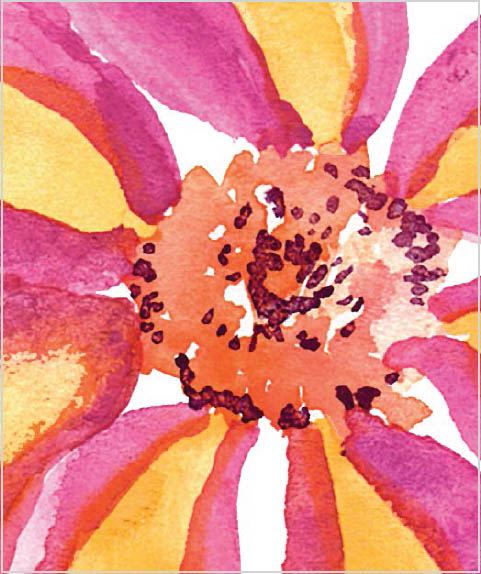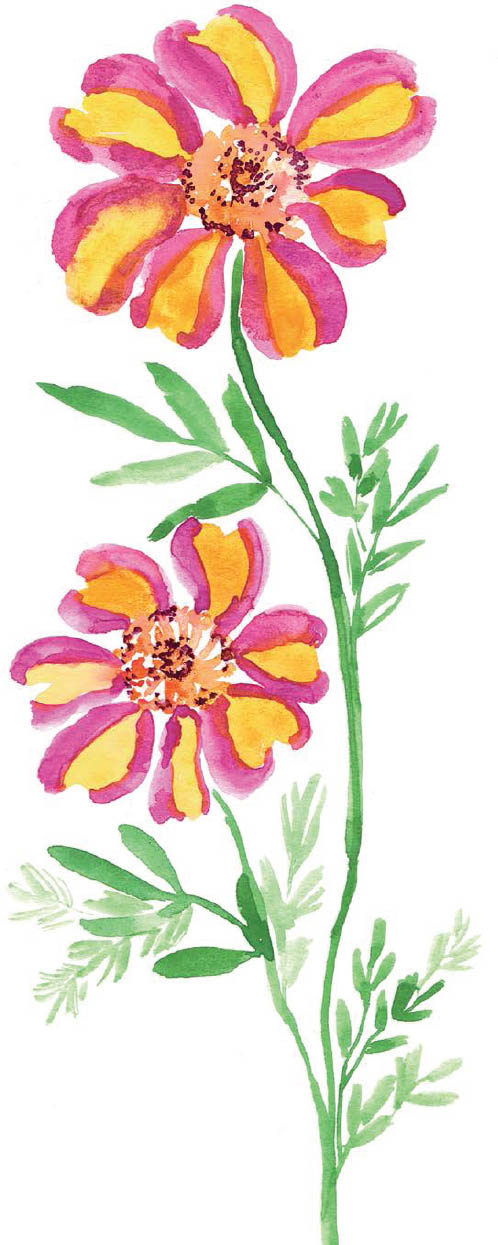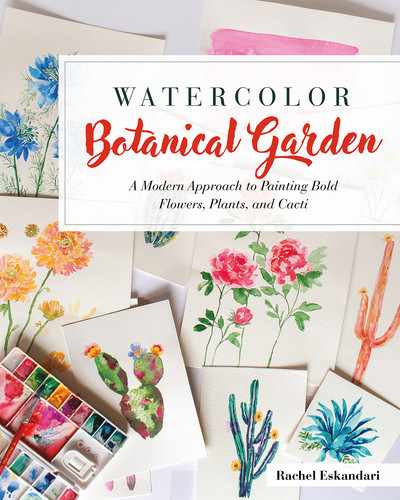French marigold
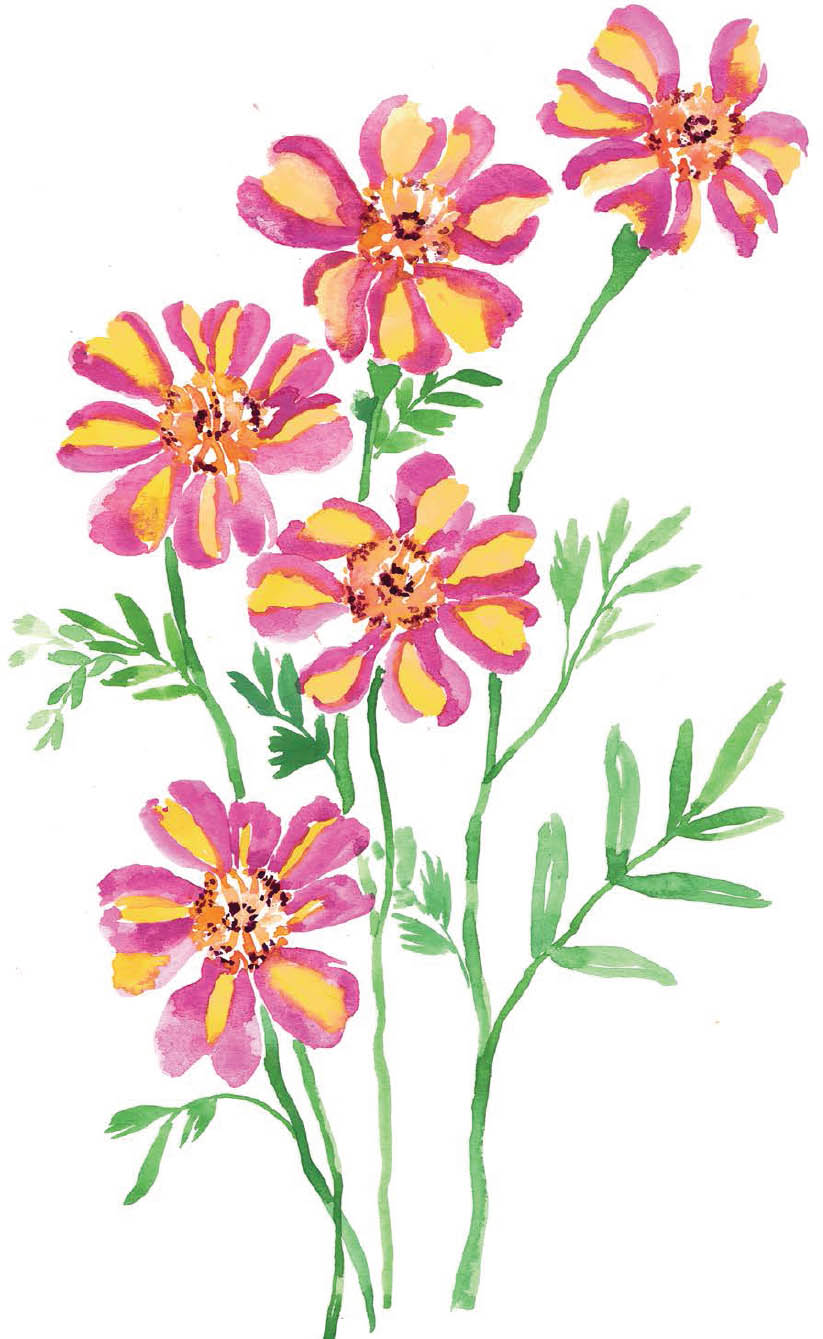
Despite its name, the French marigold’s origin is actually from Mexico and Central America; however, its seeds were transported to Europe around the sixteenth century by Portuguese explorers. Later, its popularity became most abundant in France and its territories, and how could it not with its wild combinations of reds, yellows, and oranges, and its graceful-looking leaves.
How to Paint a French Marigold
The French marigold’s petals are so dynamic due to the intense contrast between the red-violet and yellow. While painting, you need to be aware of the color bleed between the two colors, making sure that the red-violet doesn’t swallow the yellow. The soft coral center of the flower complements the dramatic petals.
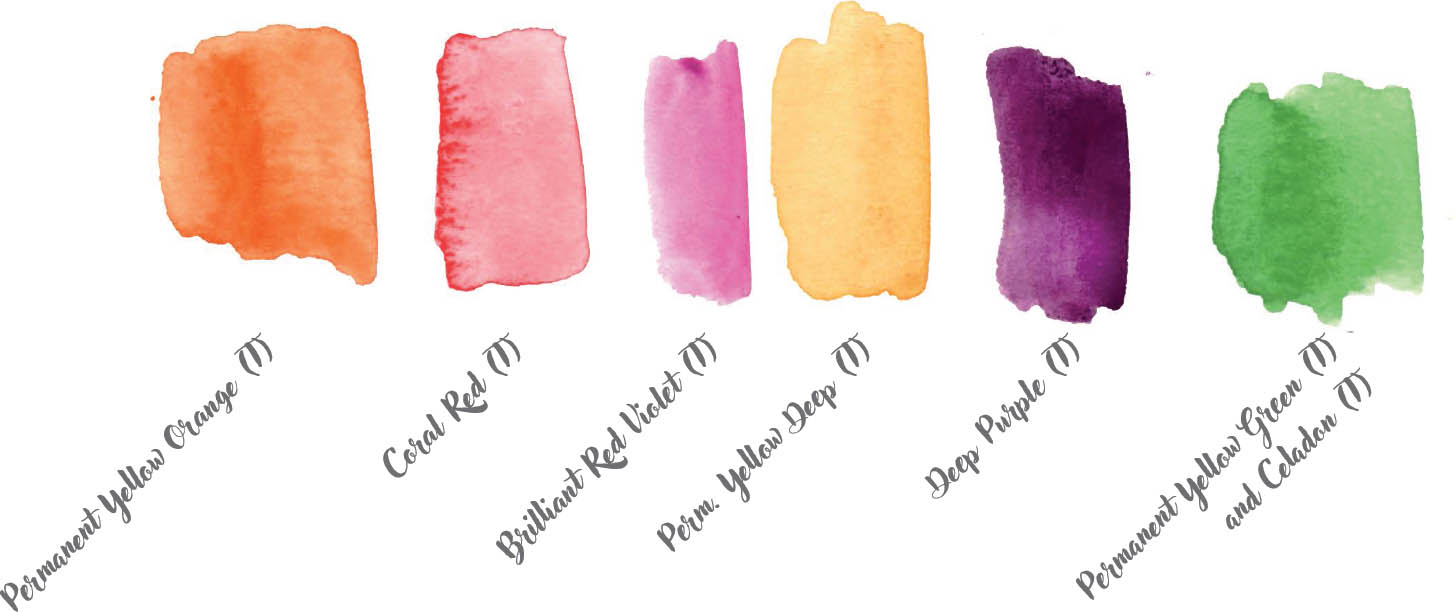
STEP 1
Like most flowers, start by painting the center. With the tip of your round brush, use yellow-orange to paint a cluster of short thin curved strokes that taper into each other. Then add some strokes along the bottom going outward. You just created your foundation for the center. Grab some Coral Red and add to the center by creating more of the same small lines fanning outward, leaving some white space as you paint. The colors will bleed into each other and appear as one shade. Use your paper towel to lift some of the color out along the right side. Some of the outer edges should be lighter than the center, so if they are still very dark, lift out some color and then add some coral back in if needed. You are painting a center that looks fluffy with some texture.

EXERCISE: It’s petal practice time for the French marigold! Take a practice sheet of paper, and with your yellow paint a petal with two brush strokes, almost like a heart shape. Practice painting some that are wider because you will be mixing different sizes when you are painting your flower. Your yellow petal is the first layer and now it is time to add in the red-violet. If you have already painted the desert rose, you will recognize a similar technique. Allow the yellow to dry then load your brush with some red-violet. When you paint the violet section, it will be more rounded at the top and then thins out a little bit as it reaches the bottom of the petal. The final shape is similar to a heart. Paint the red-violet on the left and right sides of the petal, just barely overlapping the edges of the yellow center. If you want a subtle bleed, you can add the red-violet while the yellow is still moist, but it should be nearly dry before doing so.

STEP 2
Go back to your completed middle, and start adding the petals in groupings. First, paint three petals along the bottom of the flower, starting with the yellow layer. You will need to leave large gaps between them so you have room to add the red-violet with ease. Study the different shapes of the first three petals. After the yellow has dried, add the red-violet along the edges of each petal. Don’t worry if the petals touch each other a little as you add the red-violet. If they touch a lot, then you can make one of the petals look like it is receding by adding more violet along the edge of the receding petal for shadow. With practice, you will get better at petal placement.
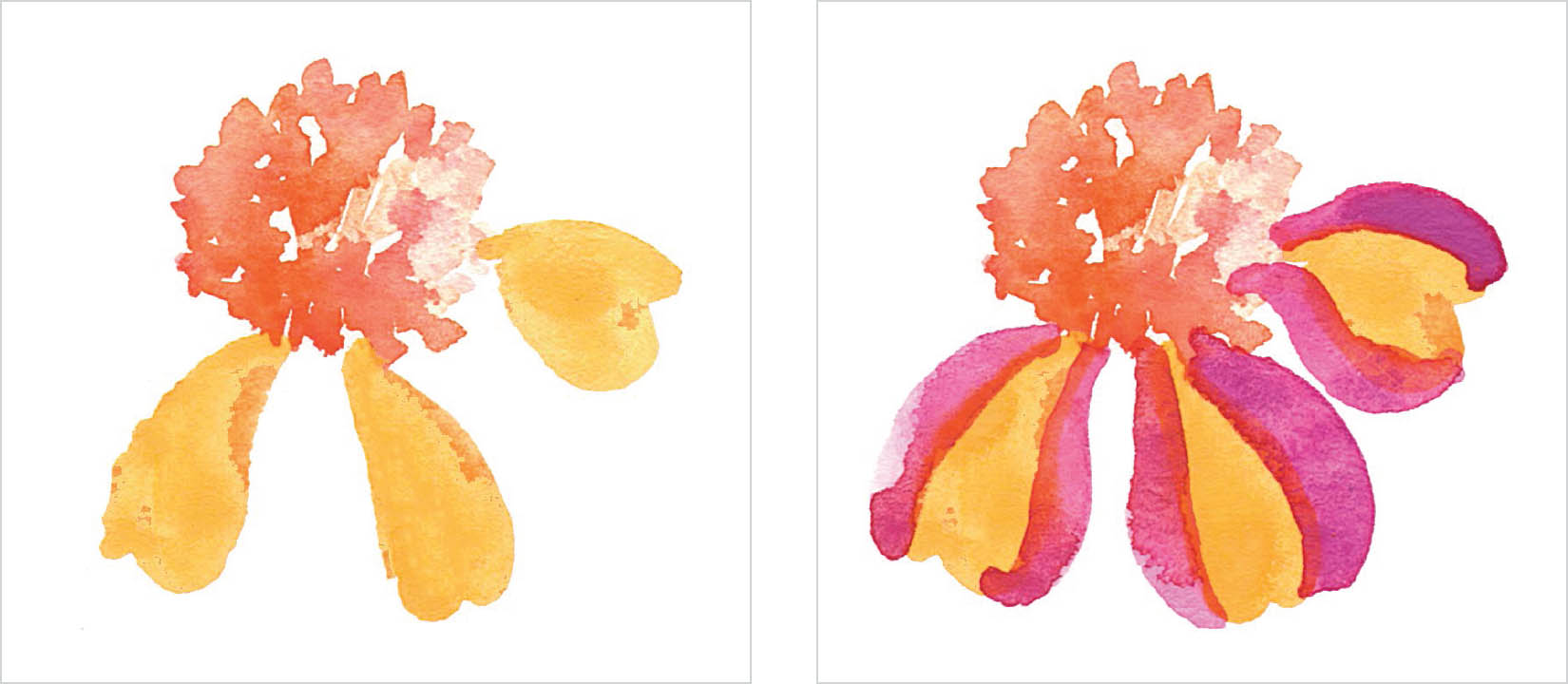
After painting your first three petals, you will have a better idea of what is working and what you need to be more aware of as you paint these petals. Continue adding the remaining petals. Depending on your flower, you may have space for three more petals, or even four. My French marigolds usually end up with seven petals.
Add more violet in areas where you want more shadow. Because the yellow is so bright, there is less of a need to lighten the violet unless there is a petal overlap.

STEP 3
In the center of the marigold, add in some Deep Purple dots for added detail. If the purple gets too dark, appearing almost black, lift out some of the color. You want it to be a visible purple shade.
For the greenery, paint with a mix of Permanent Yellow Green and Celadon. The leaves for this flower are dainty, long, and thin.
